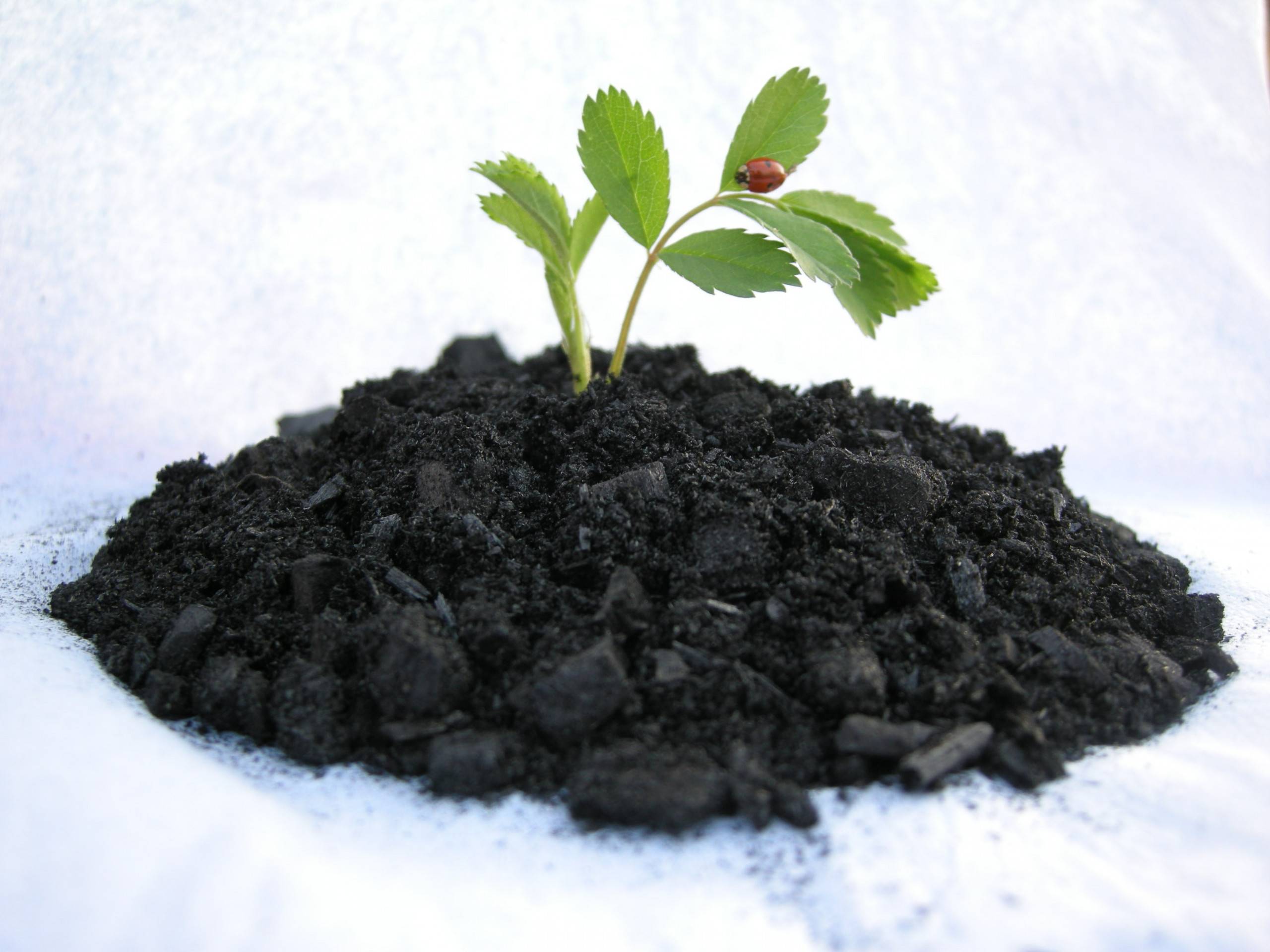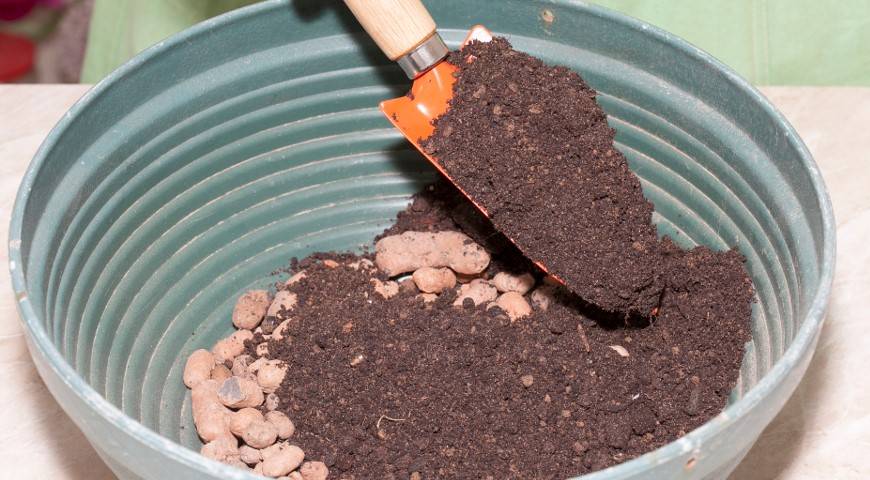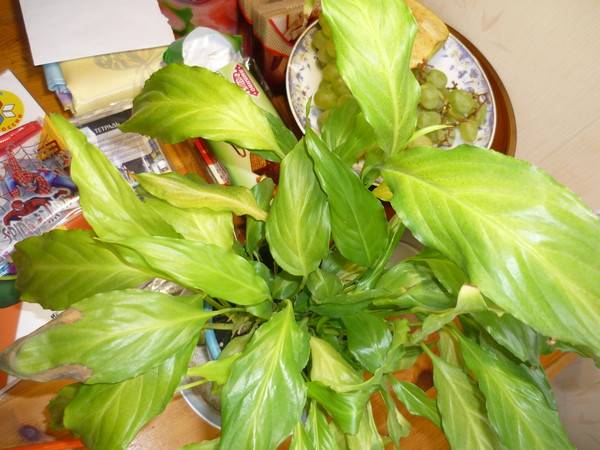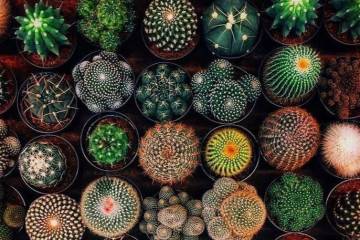Soil for spathiphyllum - what kind of land is needed for a flower
Content:
- Ground requirements for spathiphyllum
- What is the composition of the soil is necessary for a flower female happiness
- Should the land for planting and replanting be different
- Pros and cons of ready-made soil and prepared by hand
- How to cook earth at home
- How to choose a ready-made substrate
- Disinfection of the earth before planting or transplanting spathiphyllum
- Drainage
- Problems when growing spathiphyllum due to improperly selected soil
Spathiphyllum (Latin Spathiphyllum) is a popular houseplant that many growers love for its beautiful flowering and lush bright green foliage. But when growing this flower, it must be borne in mind that it is very picky about the composition of the soil, a universal substrate for planting it will not work.
Ground requirements for spathiphyllum
Before choosing a soil for a plant, you need to find out in what conditions it grows in nature. The homeland of spathiphyllum is the humid subtropics. It grows mainly along rivers, lakes or in wetlands. In such places, the soil is usually rich in humus and peat.
What should be the soil for spathiphyllum:
- loose;
- breathable;
- moisture permeable;
- easy;
- fertile;
- slightly acidic.
The acidity of the soil should be within 5.5. If the level of acidity is elevated, then dolomite flour, slaked lime or wood ash can be used to reduce it.
What is the composition of the soil is necessary for a flower female happiness
Before buying soil, you need to study the composition well. But before that, you need to figure out which ingredients must be included in the soil mixture, and which should not be there. For successful cultivation, you need to know in advance what kind of soil spathiphyllum loves.
What kind of land is suitable for spathiphyllum and what should be included in:
- sand, agroperlite or vermiculite;
- deciduous or sod land;
- peat;
- humus;
- superphosphate;
- charcoal.
The base is deciduous or sod land. It should be most of all in the composition. Peat and humus are added in the same amount. Ingredients such as sand, agroperlite and charcoal should take up no more than 10% of the total mass of the substrate.
Should the land for planting and replanting be different
The soil for spathiphyllum, as well as for the closest relative of this Anthurium flower, during planting and transplanting, may be the same in composition. It is not necessary to change the composition of the soil with each transplant. You can even leave the drainage layer old, just rinse it thoroughly before replanting the flower.
In the summer, you can transplant the flower outdoors in open ground. It is planted along with the substrate in which it grew in a pot at home.
Pros and cons of ready-made soil and prepared by hand
In order to choose one or another type of soil, you need to know all its advantages and disadvantages. And there are many of them in both species.
DIY soil mixtures
Pros of homemade mixes:
- You can independently adjust the amount of required ingredients.
- The soil mixture can be made according to the exact recipe.
- During its preparation, you can add complex mineral fertilizers, which have a positive effect on the growth of the flower.
- Saving money.
Cons of homemade substrate:
- It takes a long time to cook.
- You need to follow the instructions exactly and measure the ingredients correctly.
- The soil can be contaminated with fungal spores and insect larvae.
While the homemade option seems more economical, you will still have to spend money on the purchase of additional ingredients.
Ready mixes
Purchased products also have their advantages and disadvantages.
The disadvantages include:
- Inaccurate amount of micro and macro elements in the composition. These ingredients are usually reported as a range (for example, 6-10 grams per 100 grams of soil).
- Inaccurate acidity level. When growing spathiphyllum, it must be specific.
- High quality soil is expensive.
The advantages include ease of use. You also don't have to waste time calculating ingredients and mixing them.
How to cook earth at home
The ingredients must be mixed in a clean, processed container. First, the base for the mixture is poured, and only then the additional ingredients. Baking powder (sand, agroperlite) is the last to fall asleep. Everything is thoroughly mixed so that the mass is homogeneous.
In which land to plant spathiphyllum:
- All ingredients must be fresh.
- Additional ingredients can only be opened immediately before mixing.
- The dosages must be correct.
- Before planting, it is imperative to measure the acidity level. If necessary, you will have to adjust it.
As soon as the substrate is ready and all the characteristics are suitable for the flower, you can start planting.
How to choose a ready-made substrate
It is best to purchase a ready-made substrate in a gardening store than to puzzle over the question of what kind of soil is needed for spathiphyllum and how to make it yourself.
Nowadays, it is not so difficult to find a special soil for a flower in stores. One suitable option is Vermion soil mixture. If it was not possible to find a soil for spathiphyllum, a soil mixture for tropical plants or for aroid crops is suitable. If such soil mixtures have not been found, you can buy a universal soil, but you will have to carefully study the composition before buying and add additional ingredients.
What land is needed for spathiphyllum:
- Universal soil for the aroid family Seliger-Agro. The acidity level of this substrate is in the range of 5-6. The composition includes river sand, peat, expanded clay, large-porous baking powder and a complex of mineral fertilizers specially selected for this group of plants.
- Another good substrate is BioMaster. The composition includes moss, bio-soil, sand and charcoal.
- The substrate from Eco Garden is also suitable for planting a flower female happiness. It includes sand, moss, sod land, peat, biohumus, charcoal, agroperlite. All ingredients are stacked in layers. You can mix them at your discretion.
But not always purchased soil mixtures are suitable for the plant. After transplanting, the first time you need to monitor the flower. And if it looks bad, you need to change the soil.
What can be added to purchased soil to improve it
If you cannot find a soil suitable for its composition, you will have to buy a universal soil mixture and add other ingredients to it in order to improve it.
Before planting, sand, wood ash, coconut flakes, chopped bark or perlite are added to the universal soil for spathiphyllum.
Disinfection of the earth before planting or transplanting spathiphyllum
Disinfection of self-prepared soil is an important stage in planting a flower. Quite often, when using land from the site, insects appear some time after planting the house. The thing is that pests lay eggs in the ground, and when the larvae hatch, they begin to eat the first plants that come across. This creates problems not only for spathiphyllum, but also for all other indoor plants.
Soil disinfection methods:
- Double freezing of the soil. This method consists in the fact that the soil will need to be frozen in the freezer. But freezing alone will not be enough. Most microorganisms survive a drop in temperature calmly. After the first freeze, you need to put the soil in a warm place and water it. This will be a signal for the larvae that winter is over and warmth has come. Then the soil is re-placed in the freezer after a few days (4-6 days). After the second freeze, all larvae and insects will die.
- Using boiling water. To do this, you need to bring water to a boil and pour plenty of boiling water over the soil. Then you need to cover the container with polyethylene and wait until the soil has cooled to room temperature. This is the easiest and fastest way.
- The third way is to use a solution of potassium permanganate. To do this, you need to prepare a strong solution of potassium permanganate and pour it over the earth. After a few days, you can start the transplant.
Drainage
A prerequisite during planting is drainage. The need for a drainage layer is that it prevents stagnation of water in the soil, prevents the soil from compaction, increases air permeability, and also acts as a preventive measure against the appearance of pests and diseases. Spathiphyllum, like all other indoor plants, cannot grow normally without a drainage layer.
Drainage types:
- Natural (pebbles, brick, chips, crushed stone, fragments of ceramic products).
- Special materials (expanded clay, vermiculite, agroperlite) that can be purchased at any gardening store.
- Artificial (if it is not possible to use stone drainage, you can use polystyrene, or its analogs).
Drainage also includes drainage holes in pots and special soil loosening additives.
It is not necessary to change the drainage layer during transplantation. It can be thoroughly rinsed and reused. The optimal layer is 1-3 cm.
Problems when growing spathiphyllum due to improperly selected soil
If you choose the wrong substrate for planting, then the plant will immediately react to it.
Growing problems due to improper soil:
- The lack of flowering is associated with an incorrectly selected pot size and poor soil for nutrients. The plant itself looks weakened and stretches strongly upward.
- Yellowing of foliage occurs due to a lack of moisture in the soil. This occurs if the ground for spathiphyllum was heavy. Gradually, it becomes denser.
- Growth inhibition.
One of the most common problems is the appearance of pests. This is especially true if the soil has been mixed independently. If the soil and other ingredients were taken from the site, then the probability of the presence of larvae in them is very high. Therefore, if soil from the garden is used, it must be pickled before planting. In general, Spathiphyllum is a fairly unpretentious home flower to care for.
If you plant a plant in an improperly selected heavy soil, the earth will gradually settle, and because of this, moisture will accumulate, and the air will stop circulating. This leads to decay of the root system. As a result, the plant stops growing, the inflorescences do not form, and the buds that have already appeared fall off.
Spathiphyllum is a rather capricious plant in terms of soil selection. If you choose the wrong substrate, then the flower will immediately respond to this by the absence of flowering, yellowing of the foliage or its fall, other problems are also possible.






















